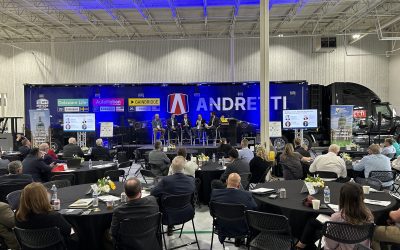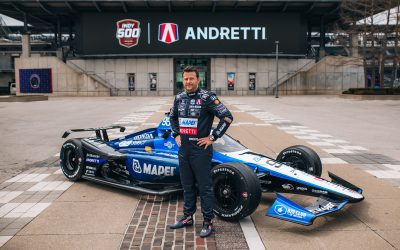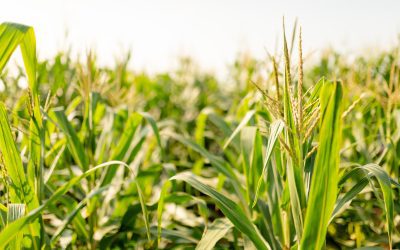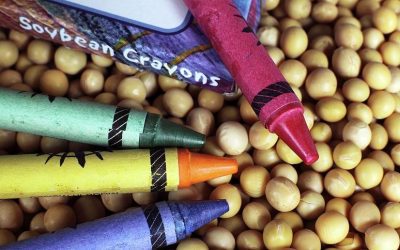Gary Lamie Scholarship winners finish insightful research projects
Posted: July 19, 2023
Category:
Indiana Corn and Soybean Post - Summer 2023, News
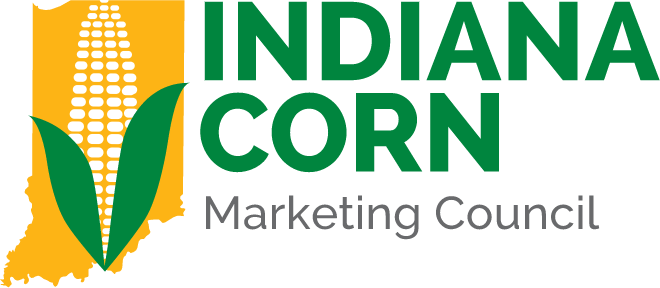


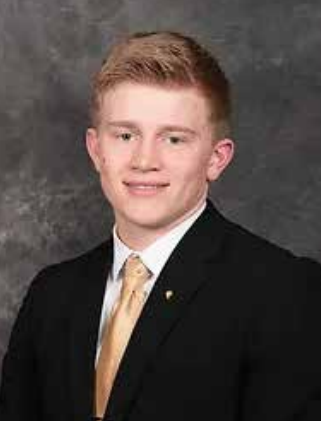
BY EMMA HOPKINS-O’BRIEN
Beginning in 2014, the Indiana Corn Marketing Council (ICMC) has been awarding $25,000 scholarships each to two Purdue University students per year working on their master’s or doctoral degrees in corn research. The scholarship, formally titled Purdue College of Agriculture’s Graduate Student Corn Research Assistantship, was named after the late Gary Lamie, a Tippecanoe County farmer and key player in establishing the state’s corn checkoff when he was ICMC president in 2013.
Last year, the scholarships were awarded to Seth Tolley for his research in integrated genotyping and phenotyping in corn to assess hybrids, and Brendan Hanson for his work on nutrient detection in corn leaves to assess crop condition in-season.
Corn genomics and phenomics
Seth Tolley did his undergraduate studies at the University of Illinois-Champaign before transferring to Purdue for his graduate and now doctoral degree in plant breeding and genetics. He graduated this past May and has spent the last few years working under Dr. Mitchell Tuinstra in the areas of corn genomics and phenomics and evaluating the use of emerging technology for those purposes.
“My project has been almost entirely related to corn and how we can bring together data sets in genomics and the environment and phenotyping to better predict yield,” he said.
One of the major ways to collect phenotypical data for Tolley has been using unmanned aerial vehicles (UAVs) equipped with different kinds of sensors which tell him much more than what a crop looks like from the sky.
“They can collect any number of data points and types when it comes to crops, but for me, the UAVs are collecting three different kinds of data.” he said.
The most basic of these is standard RGB, similar to what a camera would capture. Some phenotypic data can be collected in that way. Another one is called LiDAR — light detection and ranging — that recreates the plants in three dimensions based on the data points collected.
“What the LiDAR sensor does is send out a pulse of light and measure the time that it takes to hit the plant,” he said. “It might hit the top of the tassel; some are hitting the canopy, and some are hitting the ground — it’s sending out millions of points over our fields, and we can have a really detailed look at our field and collect more structural kinds of traits like plant height.”
The final and perhaps most complex sensor Tolley used was a hyperspectral sensor, which can see just beyond the spectrum of light visible to the human eye. This allowed him to collect about 136 spectral values related to the nutrition of the plant such as water and nitrogen contents.
“We can use the information all of these different sensors give us and assess our plots without having to go out there with a rod and a stick to measure plants,” he said. “Understanding and integrating these technologies and techniques will be valuable to the corn industry to maintain and increase genetic gain over time.”
Tolley said he has truly enjoyed his PhD work at the intersection of phenomics and genomics and hopes to do similar work in the industry to create and assess hybrids that will increase yield for farmers at the end of the day and do it quicker. This work has helped him find and practice the kind of research that is worthwhile to him, and he credits that in part to the Gary Lamie Scholarship funds, of which he is now a three-time recipient.
“The scholarship has been huge, one of the biggest things is that I haven’t really had to worry too much about funding,” he said. “That sounds simple, but it is a huge relief to just know — OK the money is there, I can just do the research that that I’m wanting to do.”

Tolley will wrap up a few projects and his post-doctoral work under Dr. Tuinstra soon and is already applying to jobs in the industry. “I would just like to express how grateful I am for the financial support from the grant,” he said. “This is an incredible partnership that they have put together, and I’m so grateful and lucky to have been a recipient.”
Cropping systems
Growing up in Minnesota, Brendan Hanson often helped his grandparents with their crop operations. Specifically, both of his grandfathers farmed just a half-hour away from each other, yet he noticed that their crop management techniques varied immensely.
“Part of the reason I went into agronomy, I think, is that my grandpas were farmers and from year to year, even as a little kid, I saw that they did things quite differently, yet were both successful,” Hanson said. “I realized that with the cropping systems, there’s so many different things that farmers can do to promote yield, and they all have their own reasons, but that’s the beauty of it.”
Fascinated by the inner workings of crop management, he completed undergraduate studies in agronomy at North Dakota State University and transferred to Purdue for his graduate degree in Dr. Tony Vyn’s cropping systems research lab. There, his graduate project under Vyn involved evaluating the concentration of nutrients in various leaf selections at specific growth stages on corn plants to determine whether an in-season fertilizer application is justified.
“At a few stages of the corn growth cycle, we are selecting a few different positions — for example the top leaf versus a middle leaf, versus the bottom — sampling those leaves and comparing the nutrient status of each,” he said.
Some farmers find it advantageous to sample leaves on their plants to get an idea of how healthy those plants are during the growing season. With this in mind, the idea behind Hanson’s research is to find which leaves of a corn plant are most representative for each nutrient.
“We’re going in with the understanding that each nutrient — five or six nutrients in particular that we are concerned with — each of these nutrients acts differently,” Hanson said. “Some of them are stored in the bottom of the plant, some like to go towards the top, and so we understand that there’s not going to be a single leaf that is the best representation of the whole plant, so the idea is with my research to try and figure out — if you are interested in this specific nutrient, which leaves should you sample?”
His experiments spanned two field locations — one at the Purdue Agronomy Center for Research and Education (ACRE) and another at the Corteva Research Service Station in Windfall, Ind. He gathered leaves from corn situated differently in terms of hybrid type, fertilizer application and density at the V8, V12 and R1 stages of development (five weeks, seven weeks and at the silking stage, respectively).
“Those are the row stages we chose because you’re still able to sort of do something about any nutrient stress at that time,” he said. “Beyond that, there’s really no benefit to understanding because it’s kind of a lost cause if you waited that long to apply more nutrients.”
Hanson mentioned that this work is also part of a collaboration with a research group called Internet of Things (IoT) involving Purdue and four other universities throughout the country. The purpose of the entire project is to breach the gap between agronomy and remote sensing. Engineering students involved in the project are collecting drone data as well as data from ground rovers that drive autonomously through fields.
“We have a lot of different perspectives of imagery, and we’re trying to relate those with my samples,” he said, “We know the true concentration of the nutrients while we see the traits, and then we’re training these robots that — OK from our samples, if the percentage of the nutrients are this, then this is what it’s going to look like and so on.”
With the entirety of the IoT project, the goal is to one day develop equipment that can confidently deduce the concentrations of nutrients in leaves without even needing to go through the sampling and nutrient analysis process. He credits the depth of his research to the funding he was awarded via the Lamie scholarship.
“There’s so many different treatments we’re looking at, with four different genotypes, two different densities, and two different nitrogen rates,” he said. “We definitely would not have been able to explore as many different environments without the scholarship—we probably would have just been limited to nitrogen rates.”
With the funding, Hanson’s project could afford more samples and introduce different treatments to have a more complete story to tell through the results. It also allowed for more undergraduate help to prepare the samples—a process that takes a lot of hard work, and up to a month or more to receive analysis.
“My adviser and I are both very appreciative of the scholarship,” Hanson said. “My research would not be as good or as thorough as it is without the funding and I’m really excited because this is a project that I know farmers will find value in, and I’m really looking forward to growers being able to see what we’ve discovered.”
Once he wraps up his master’s degree in the fall, Hanson would like nothing more than to continue what he has been doing, but in a commercial space. Ideally, he would like a research and development role overseeing experiments, testing hybrids and testing chemical products.
“I’m really excited if I end up with a job like that, for the opportunity to have field days where farmers can come and see the comparisons of the products, and we can relate it back to their own farm,” he said. “Because to me it’s really important that a company not only sells a product, but they sell it to benefit the farmer the best that they can.”
While Tolley and Hansen are packing up and heading out on their journeys into professional life, two new students Mariela Fernandez Campos and Denise Caldwell — have been named the 2023 Lamie Assistantship winners. Having won out in an application process and filmed themselves in videos summarizing their projects, the two will carry out their research this year and report back to ICMC next summer.
